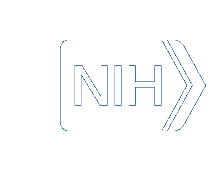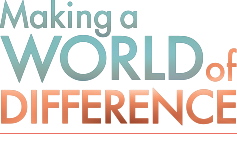International Conference on Primary Health Care, 1978
Courtesy World Health Organization
Delegates from 134 nations, global health organizations, and health agencies met at the 1978 International Conference on Primary Health Care in Alma Ata (now Almaty, Kazakhstan). Together, they set out a transformative vision to bring health to all people. The delegates’ call to action still inspires people to act on barriers to health.
“…[H]ealth, which is a state of complete physical, mental and social well-being, and not merely the absence of disease or infirmity, is a fundamental human right…”
Excerpt from the Declaration of Alma Ata, 1978

Drs. Sidney and Emily Kark in South Africa
Courtesy Jeremy D. Kark, MD, PhD
Drs. Sidney and Emily Kark founded the Pholela Health Center on a Zulu tribal reserve in Natal, South Africa in 1942. The Karks and their staff took a broad view of medical care that included medical treatment and social action to reduce the effects of poverty and discrimination.

Pholela Health Center, late 1950s
Courtesy Norman A. Scotch, PhD
Pholela Health Center was situated on a Zulu tribal reserve in the eastern province of Natal, South Africa, where poverty played a key role in the health problems in the region. Recognizing this, center staff expanded their medical work to include improving housing, sanitation, and access to food.

Dr. Emily Kark, right, and Pholela Health Center’s nurses and physicians provide essential medical care to patients, early 1940s
Courtesy Jeremy D. Kark, MD, PhD


A child care class at Pholela Health Center, early 1940s
Courtesy Jeremy D. Kark, MD, PhD
Health education, including classes on child care, was an important part of the health center staff’s work.

A patient at Pholela Health Center receiving a vaccination in the early 1940s
Courtesy Jeremy D. Kark, MD, PhD
Pholela Health Center hosted immunization days for community members.

Farming crops in Pholela Health Center’s demonstration garden in the early 1940s
Courtesy Jeremy D. Kark, MD, PhD
Young people learned to farm crops in Pholela Health Center’s demonstration garden.

Building A-frames for farming at Pholela, early 1940s
Courtesy Jeremy D. Kark, MD, PhD
Clinic staff worked with local farmers to build A-frames. Farmers used these wooden structures to mark contours on slopes. They then dug ditches along those contours to control soil erosion. Tasks like these improved the farms’ productivity and contributed to the long-term health of residents by ensuring that they had access to food.

Prenatal care at the Pholela Health Center, early 1940s
Courtesy Jeremy D. Kark, MD, PhD

Children receiving vaccinations from Pholela Health Center workers, early 1940s
Courtesy Jeremy D. Kark, MD, PhD

Children playing at Pholela Health Center, early 1940s
Courtesy Jeremy D. Kark, MD, PhD
Children who visited the Pholela Health Center had the opportunity to play and build relationships with their neighbors and the clinic’s staff.

Drs. Sidney and Emily Kark (center) with colleagues, Jerusalem, 1960s
Courtesy Jeremy D. Kark, MD, PhD
Drs. Sidney and Emily Kark, center, faced harassment and surveillance for their work with black South Africans during apartheid, a legal system of racial segregation. The Karks eventually left South Africa and continued to advance their comprehensive approach to medical care in North Carolina and Jerusalem.

Letter from Sidney Kark to the principal of the University of Natal, 1957
Courtesy Jeremy D. Kark, MD, PhD
Dr. Sidney Kark criticized the South African government’s policy of apartheid, a legal system of racial segregation. In 1957, he wrote this letter to the University of Natal criticizing the government’s interference in his work as a member of the faculty and resigned in protest.

Dr. H. Jack Geiger, 1968
Courtesy Daniel Bernstein
Dr. H. Jack Geiger helped to develop the Delta Health Center in Mound Bayou, MS, which offered medical care and services to address social issues in the area, like hunger and unemployment. Dr. Geiger had spent several months in 1957 at the Pholela Health Center in South Africa during medical school. As a volunteer with the civil rights movement during 1960s, Geiger saw how the comprehensive approach to medical care in use at Pholela could be applied in the United States.

Dr. John W. Hatch, right, joined Dr. H. Jack Geiger, left, at the Delta Health Center during its construction, 1966
Courtesy Daniel Bernstein
Dr. John W. Hatch created a network of ten local community health associations affiliated with the center. In the 1960s, the Delta Health Center served roughly 14,000 people over a 500-square mile area.


Delta Health Center nurses making a home visit, ca. 1960s
Courtesy Daniel Bernstein
The Delta Health Center’s visiting nurses provided primary health care to people in their homes. Many of their patients were unable to visit the clinic.

Laboratory staff, Delta Health Center, 1970
Courtesy Daniel Bernstein
The Delta Health Center was equipped with a clinical laboratory where clinic staff examined samples from patients onsite for various tests.


Delta Health Center staff performs a newborn checkup, ca. 1968
Courtesy Daniel Bernstein

Members of the Delta Health Center farm cooperative, 1968
Courtesy Daniel Bernstein
The Delta Health Center sponsored a farm cooperative to ensure that people in the community had access to fresh, nutritious food. Cooperative members, like Melvin Grant, right, pictured with Dr. John W. Hatch, left, grew and shared their produce.

Will Finch, president of the Delta Health Center-sponsored farm cooperative, holds a donation check that will pay for the purchase of three hundred acres of land, 1968
Courtesy Daniel Bernstein

Members of the Delta Health Center-sponsored farm coop at work, ca. 1968
Courtesy Daniel Bernstein
Delta Health Center-sponsored farm cooperative members were able to grow their own food to combat malnutrition, a major cause of poor health in the area.

Delta Health Center staff building a water pump, 1968
Courtesy Daniel Bernstein
Staff at the Delta Health Center dug wells and built water pumps to help residents of Mound Bayou access clean water. This reduced their vulnerability to diarrheal diseases.

Delta Health Center, 2006
Courtesy Delta Health Center, Inc.
The work begun at the Delta Health Center has inspired a national network of community health centers. Every day, despite budget constraints, thousands of patients who would not otherwise be able to afford medical care receive the treatment they need.

Network of the National Library of Medicine
NLM works with thousands of libraries and other organizations in communities across the United States through a program known as the Network of the National Library of Medicine (NNLM). The Network offers funding for projects that improve access to health information, increase engagement with research and data, expand professional knowledge, and promote awareness and the use of NLM resources in local communities.

President of El Salvador José Napoleón Duarte holds the first child to be vaccinated against polio as part of Health as a Bridge for Peace, 1985
Courtesy UNICEF HQ Photography Unit/Dennis Bidd Gray
In 1985, the Pan American Health Organization (PAHO) launched Health as a Bridge for Peace, a campaign to eradicate polio from the Americas. PAHO worked with governments, combatants, and local organizations in areas with ongoing conflict to end hostilities and provide medical care.

Workers advertise an immunization program in El Salvador, 1980s
Courtesy PAHO Archives
As part of the Health as a Bridge for Peace program, the Pan American Health Organization (PAHO) and local groups throughout Latin America publicized vaccination days using banners, parades, posters, home visits, and more.

Soldiers vaccinate a child in El Salvador, 1980s
Courtesy PAHO Archives
After six months of negotiations under the Health as a Bridge for Peace campaign, the government and opposition forces in El Salvador agreed to a ceasefire to allow for immunization. There were 20,000 people, including guerilla fighters, mobilized to vaccinate the nation’s children.

A parade for immunization days in Honduras, 1986
Courtesy PAHO Archives
As part of Health as a Bridge for Peace, health workers and local groups publicized vaccination campaigns using banners, parades, posters, home visits, and more.

Luis Fermín Tenorio Cortez, right, pictured with his doctor Roger Zapata, MD in Peru, ca. 1991
Courtesy PAHO Archives
Two-year-old Luis Fermín Tenorio Cortez was identified as the last known case of polio in the Americas in August 1991. His local health center sustained damage during the conflict in Peru, which prevented him from completing his polio immunization.

Extramural Programs and the HealthMap Vaccine Finder
Courtesy vaccinefinder.org
The HealthMap Vaccine Finder grew out of the research project led by John S. Brownstein, PhD to help people locate vaccine providers in their communities. In 2010, Dr. Brownstein PhD received a grant from the NLM Extramural Programs to further his research into public health observation and social media. In addition, the National Institutes of Health nominated his research and he received the prestigious PECASE award.
In a unique role for a medical library, the National Library of Medicine’s Extramural Programs Division provides grants for research projects and graduate training in biomedical informatics and data sciences. By helping to develop computational methods for describing, linking, visualizing, analyzing and presenting health data, NLM’s grants help bring biomedical research and its results into real-world settings of clinicians, patients, researchers and consumers.

Flooding in New Orleans in the aftermath of Hurricane Katrina, 2005
Courtesy AP Photo/NOAA
In the summer of 2005, Hurricane Katrina caused extensive damage, creating a health care crisis for the Gulf Region. In the days afterwards, residents relied on disaster response teams from other states and community health centers for help. Medical staff and volunteers set up temporary clinics wherever they could.

A temporary clinic at the airport in New Orleans, 2005
Courtesy DMAT San Diego CA-4
In the wake of Hurricane Katrina, many people waiting for evacuation were in medical need due to injuries, lost medicines, chronic illnesses, and disabilities. The Disaster Medical Assistance Team (DMAT), an emergency response group from San Diego, CA, set up a temporary clinic in New Orleans' airport to provide emergency medical services.

Patients awaiting evacuation after Hurricane Katrina, 2005
Courtesy DMAT San Diego CA-4
After Hurricane Katrina, elderly and critical patients waited for evacuation at Louis Armstrong New Orleans International Airport in New Orleans, where the Disaster Medical Assistance Team (DMAT), an emergency response group from San Diego, CA, set up a temporary clinic.

Evacuating patients after Hurricane Katrina, New Orleans, 2005
Courtesy DMAT San Diego CA-4

Medical records damaged by Hurricane Katrina, 2005
Courtesy EXCELth, Inc.
In 2005, Hurricane Katrina damaged community health centers and destroyed patients’ records. Despite this damage, the clinics’ staffs kept working. They traveled to evacuation centers and temporary accommodations to provide care to the injured and deliver vital medicines.

Dr. Nubia Muñoz (standing), ca. 2000
Courtesy Nubia Muñoz
Dr. Nubia Muñoz researched the link between cervical cancer and infection with the human papilloma virus (HPV) at the International Agency for Research on Cancer in Lyon, France in the 1980s.

Dr. Ian Frazer, ca. 2017
Courtesy The University of Queensland Diamantina Institute
Dr. Ian Frazer, left, was the leading researcher on the team that developed the GARDASIL vaccine in 2006. He continues his cancer research with Dr. Katharina Devitt, right, and others.

Guide to Introducing HPV Vaccine into National Immunization Programmes, 2016
Courtesy World Health Organization, from the WHO Guide to HPV Vaccine. Geneva, Switzerland: World Health Organization; 2016. Licence: CC BY-NC-SA 3.0 IGO, This adaptation was not created by WHO and the original edition shall be the binding and authentic edition
The World Health Organization (WHO) promotes HPV vaccination as an essential part of cancer prevention programs in its Guide to Introducing HPV Vaccine into National Immunization Programmes. By 2017, over 270 million doses of the HPV vaccine had been distributed worldwide in an effort to reduce cervical cancer deaths.

ClinicalTrials.gov
Courtesy iStock, Shironsov
ClinicalTrials.gov provides public access to up-to-date information from investigators about ongoing and completed clinical trials and results. NLM maintains ClinicalTrials.gov, the world’s largest database of privately and publicly funded clinical research conducted in the U.S. and around the world.
National Library of Medicine
8600 Rockville Pike
Bethesda, MD 20894






